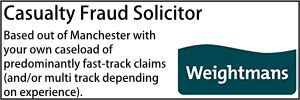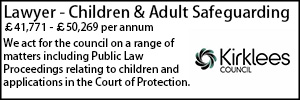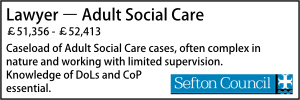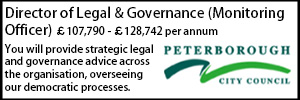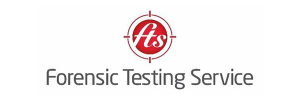Ombudsman finds council at fault for “failing to evidence” school transport decision-making process and providing incorrect information
The Local Government and Social Care Ombudsman has criticised Bracknell Forest Council for “failing to evidence its decision-making process” and for providing “incorrect information” in relation to the school transport process, after a father complained that the council failed to follow government guidance when deciding the route his child’s school transport should take.
- Details
The man behind the complaint, Mr X, complained about how the council decided on what school transport was suitable for his daughter, Y.
Mr X said the transport the council provides takes between 75 and 90 minutes due to multiple stops along the route, and means Y arrives at school distressed and not ready to learn.
Y has SEN and her education is supported by an EHC Plan. Following an annual review, Y’s EHC Plan named only School A, an out-of-borough specialist primary school.
The Ombudsman said the council provided travel assistance to and from School A by use of a shared taxi with two other students and a journey time of around 45 minutes each way.
In July 2024, the council wrote to Mr X to explain three additional students would be joining the route to and from School A from September 2024. It explained Y would now be travelling in a larger taxi and this would increase the journey time.
Mr X complained to the council as he said the journey time now “significantly exceeded government guidance”.
Mr X reminded the council Y had previously experienced issues on the journey and said the new pickups, taking the journey time beyond 45 minutes, may result in a recurrence.
The council responded to explain the 45-minute journey time was best practice, but not always possible particularly with out-of-borough schools.
It said that School A was parental preference so it was only providing transport on a “discretionary basis” and said Mr X could consider receiving mileage reimbursement if he would prefer to transport Y to and from school.
The Ombudsman said: “In response to our enquires the council has said it received no reports of Y arriving at school distressed or unable to access education due to the length of the journey following its decision to change the route in September 2024. The council also said shared transport with five other students has increased the overall journey time and it has not been feasible to create a shorter, more direct route. However, the council has not provided evidence of its decision-making from the time or how it weighed up competing priorities within the guidance.”
Considering Mr X’s complaint, the Ombudsman found that in the academic year 2023/24, the council provided transport to and from School A through use of a shared taxi with a journey time of roughly 45 minutes each way, in line with the guidance.
The report noted: “There was an incident where Y became unsettled due to the length of time spent waiting in the taxi, but measures were put in place to remedy this. I do not find fault with how the Council provided school transport for Y in the academic year 2023/24.”
From September 2024, the journey time increased beyond 45 minutes as three additional students needed transport to and from School A. The council said this was in order to meet the guidance to promote sustainable transport.
On this change, the Ombudsman said: “Elements of the guidance often pull in different directions and in those instances the council will need to decide which to give most weight to. Exceeding the 45-minute journey time in order to promote sustainable transport is not in itself a reason to find the council at fault.”
The Ombudsman added: “However, the council has not provided me with records to show its decision-making process and what it considered when deciding the guidance to promote sustainable transport outweighed the guidance for journeys not to exceed 45-minutes.
“It is not my role to say what decision the council should have reached, but not providing evidence to show its considerations from the time, how it considered the impact on Y, and how it weighed up how the additional cost of a second taxi offset the need to keep the journey time below 45 minutes amounts to fault and creates uncertainty which is injustice.”
The council said there were no reports of incidents involving Y on school transport or arriving at school unable to engage in education following its decision to change her route.
This being the case, the Ombudsman did not find the council at fault for failing to review the route during the course of the year, but noted that “the initial uncertainty remains”.
The Ombudsman added: “I say this particularly as I cannot see the council ever gave Mr X a clear explanation around why it decided the guidance to promote sustainable transport outweighed the guidance for journeys below 45-minutes, particularly when it had previously been able to achieve journeys of that length for Y.”
Finally, the report said: “In its responses to his complaints, the council told Mr X transport was provided on a discretionary basis as School A was parental preference. However, this is incorrect as School A was the one school named on Y’s EHC Plan, meaning that is the school the council had deemed to be the nearest suitable school for her. The council also said for out-of-borough schools it is not always possible to meet the 45-minutes set out in the guidance and so it works to the 75-minutes suggested for secondary school aged children.
“However, there is nothing in the guidance or the council’s policy around using the 75-minutes as a substitute for out-of-borough schools so it is unclear where this rationale has come from. This incorrect and misleading information from the council amounts to fault and creates further uncertainty, which is injustice.”
To remedy the injustice caused, the Local Government and Social Care Ombudsman said the council should:
- write to Mr X to apologise for the uncertainty caused by its failure to evidence its decision-making process around increasing Y’s school journey time beyond 45 minutes and for the misleading information it provided.
- pay Mr X £300 to recognise the uncertainty caused to him by the injustice identified above.
- write to Mr X setting out plans for Y’s school transport from September 2025. If the journey time will be longer than 45 minutes, the council should clearly set out its reasoning and how it weighed up competing priorities in the guidance before making its decision.
- remind staff who make decisions on school transport applications of the importance of clearly setting out their reasons and what they have considered, particularly when deciding not to meet specific elements of the guidance.
- create a process for staff to follow when making decisions on school transport to aid decision making where guidance pulls in different directions and setting out what should be prioritised. The council should also update its policy to reflect this.
Grainne Siggins, executive director of people at Bracknell Forest Council, said: " We acknowledge the findings of the Local Government and Social Care Ombudsman and apologise to the family involved for the distress caused. We are implementing the recommended actions. We remain committed to reviewing and improving our processes to ensure fair and lawful decisions for all families.
“We want the best for all our children, young people and their families and making improvements to our SEND provision is of paramount importance to the council and its political leaders.
“Our SEND strategy, which was coproduced with parents, also outlines the key areas of focus for the council. This includes creating new educational provision for children and young people with special educational needs in Bracknell Forest. We are making progress in increasing capacity through special resource provisions in existing schools as well as the development of two new schools. These new provisions will reduce the need for children and young people to travel outside of Bracknell Forest for their education.”
Lottie Winson






